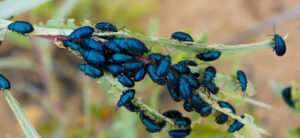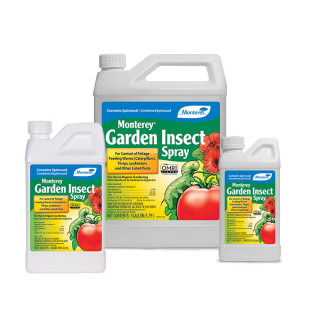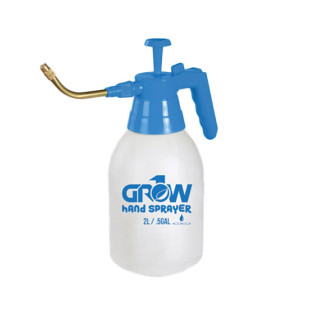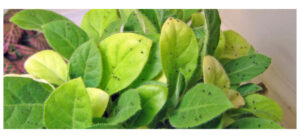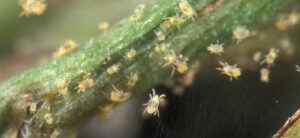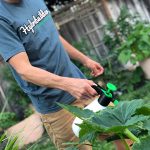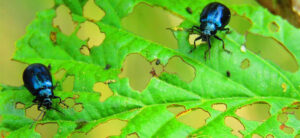
While you may suspect these are only a problem for your pets, it's important for growers to learn how to get rid of flea beetles in the garden too!
No, these aren’t the same bugs that can irritate your dogs - they are a frustrating garden pest that can wreak havoc on your plants and destroy all of your hard work quickly if you don't take action.
This insect tends to have an insatiable appetite, consuming your lush green foliage at a rapid rate.
Because of this, it's imperative that you learn how to get rid of them quickly should you encounter them in your grow room or garden.
We have all of the information you need to prevent these pests - and to stop them from doing any more damage.
First, though, we need to explain what exactly these bugs are, and teach you how to identify them!
What Are Flea Beetles?
There are actually several species of flea beetles that are common in the United States, so it’s not surprising that there is some variation in their appearance.

Most are black to tan in color, although there are some kinds that sport bright colors instead.
These small, shiny bugs can have stripes, spots, or a solid pattern of coloration. They’re only about 1/16 of an inch in length and they’ll spring away quickly when you come upon them.
They have large rear legs, too, helping them move rapidly as they move from plant to plant.
What Damage Can Flea Beetles Do In The Garden?
Although it is relatively easy to remedy a flea beetle infestation, these pests can do some serious damage if you don’t take steps to stop an infestation as soon as you detect it.
Adults feed primarily on the foliage of plants, producing large holes in the leaves. The holes tend to appear most rapidly on young seedlings - unfortunately, this is also where these holes can do the most lasting harm.
Flea beetles are dangerous in another way besides defoliation, too - they can also spread bacterial diseases.
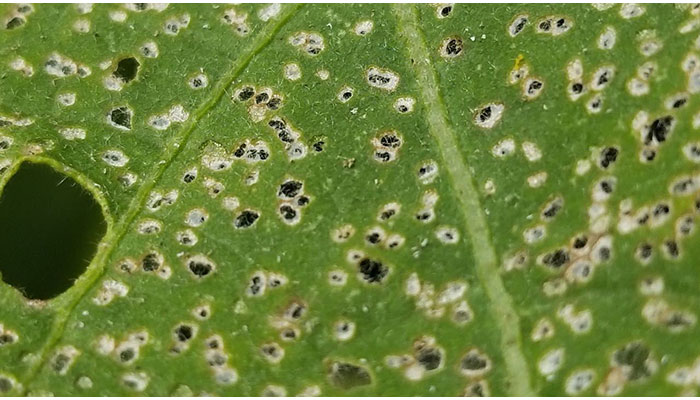
Both blight and wilt are readily spread by these pests, making them problematic in just about any garden.
They overwinter in brush and in wooded areas, with adults posing the largest threat early on in the planting season.
They’ll generally emerge in the spring, when daytime temperatures hover around 50 degrees Fahrenheit or so. Conveniently, this is also the time when seedlings are being planted. These baby plants are most vulnerable to flea beetle infestation.
Adults will lay their eggs at the base of plant stems early in the summer after feeding on seedlings, while larvae will progress to feed on the roots of the plants.
What Plants Do Flea Beetles Go After?
Flea beetles are indiscriminate feeders, going after just about all types of plants, including turnips, radishes, kale, cabbage, peppers, broccoli, tomatoes, and eggplants.
Some species go after primarily plants in the Brassica family while others target nightshade crops - there is a lot of variation in what these pests like to eat!
How To Prevent A Flea Beetle Infestation In The First Place
As with any garden pest, it is far easier to control a flea beetle infestation with a bit of prevention than it is to try and combat a problem once it’s already appeared.
Your preventative efforts should start in the spring. This is when flea beetles will be opportunistically waiting to emerge and feast on your plants.
Wait To Plant Until The Weather Warms
If you can, wait to transplant until the weather has warmed to 65 degrees or so. This might get you past the window of danger when it comes to flea beetle infestations.
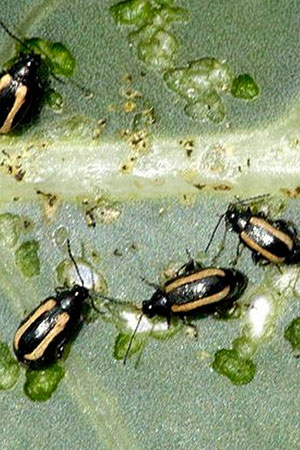
If that doesn't work, you may want to consider using row covers. Row covers, as long as they are totally sealed, can be placed over fragile seedlings immediately after transplanting.
Keep The Garden Clean
You should also take steps to keep your garden plants as healthy as possible. The healthier your plants are, the less likely it is that a flea beetle infestation will decimate your garden.
Keep a clean garden space and be sure to till each fall to unearth hiding flea beetles. Remove any plant parts or waste from the soil.
As an added bonus, this will make it much easier to get right into your garden to plant next spring!
Companion Planting May Help
You can also give companion planting a try. Flea beetles are known to be repelled by basil and catnip, so consider growing these as barriers around your garden.
Another option is to employ trap crops. Since flea beetles are attracted to radishes and nasturtium, you may consider planting these near your garden to lure flea beetles away from your other more valuable plants.
Follow A Proper Watering Regimen
Following a regular watering regimen can also help keep your plants safe and strong.
Mulching around your plants can help limit the ability of the beetles to travel from plant to plant and it can also help conserve soil moisture.
How To Get Rid Of Flea Beetles In The Garden Naturally

Ready to learn how to get rid of flea beetles in the vegetable garden? We'll share some natural home remedies you can try, along with some of the best pesticides to kill these irritating pests.
Homemade Insect Killing Soap & Other Remedies
One option is to make a homemade spray consisting of five cups of water, a tablespoon of liquid soap, and two cups of rubbing alcohol.
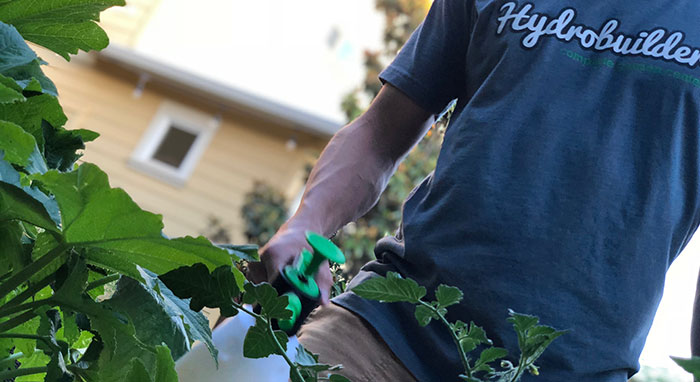
You should test this mixture out on the leaf of a single plant first, just to make sure it doesn't burn. If you don’t notice any ill effects, you can go ahead and apply it to all of the foliage of all of your affected garden plants.
You can also dust your plants with plain talcum powder. This is particularly effective on nightshade vegetables.
If you aren’t sure how many flea beetles you have in your garden - or if these guys are even to blame for your infestation - you may want to use some sticky traps to capture them as they jump.
Try Spraying Neem Oil
You may also consider applying neem oil, a natural insecticide, to fight these bugs.
This is an incredibly effective pest control approach that is perfectly safe for use on your plants, and for you as well. It won't harm beneficial bugs most of the time, and can quickly remedy most garden problems.
If you are interested in learning more about this approach, read our complete guide on when & how to use neem oil.
Does Diatomaceous Earth Kill Flea Beetles?
Diatomaceous earth is a product that is safe for use around children, pets, and most beneficial insects - but it will kill a variety of pests, including flea beetles.
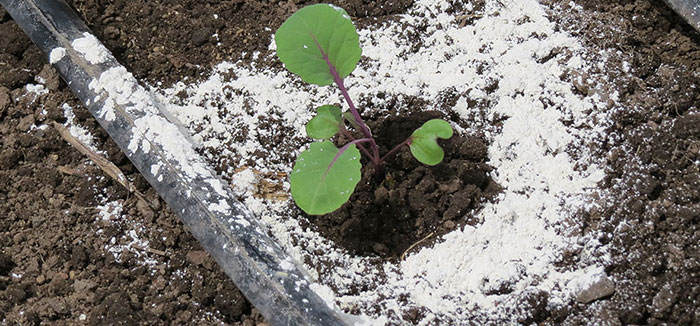
It's made out of the crushed-up fossilized microorganisms and forms a harsh dust that most pests don’t like walking across.
You can dust your plants or around the perimeter of your garden with diatomaceous earth, but keep in mind that you’ll have to reapply often. It is easily washed away by rainwater and irrigation.
For more information on how to get rid of flea beetles with this product, check out our complete guide on using diatomaceous earth.
What Insecticide Kills Flea Beetles On Plants?
If you don't have time to waste with a flea beetle infestation, you should use an insecticide to kill them quickly and safely.
Both spinosad and permethrin are options that may help get rid of the flea beetles.
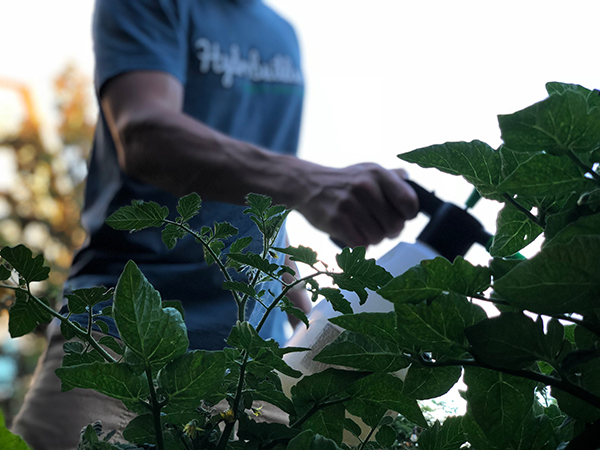
However, bear in mind that you’ll likely need to apply these products several times, since flea beetles are so mobile - they can easily avoid the dust when you apply it.
Here are some products you can consider using which can kill flea beetles on plants:
- Monterey Lawn & Garden Insect Spray with Spinosad - broad use OMRI listed pesticide concentrate.
- Bonide Pyrethrin Garden Insect Spray Concentrate - safe for use up to the day of harvest, very effective against beetles.
- Fox Farm "Don't Bug Me" Pyrethrin Spray - Pre-mixed & diluted spray bottle, kills flea beetles on contact.
No matter which pesticide you bring to the fight, carefully follow the directions on the bottle. Some of these should only be used at certain points in time.
Also be sure to spray early in the morning when it's cool out, wear proper PPE, etc.
Final Thoughts On How To Get Rid Of Flea Beetles
Flea beetles might not make you itch and scratch like their namesake, but they’re irritating pests to deal with nonetheless.
If you’re sick of dealing with infestations in your garden, it’s time you give some of the simple solutions described above a try.
Grab all of your gardening and pest control supplies at Hydrobuilder and follow these tips on how to get rid of flea beetles in the garden, and you’re sure to have your most productive season yet.





